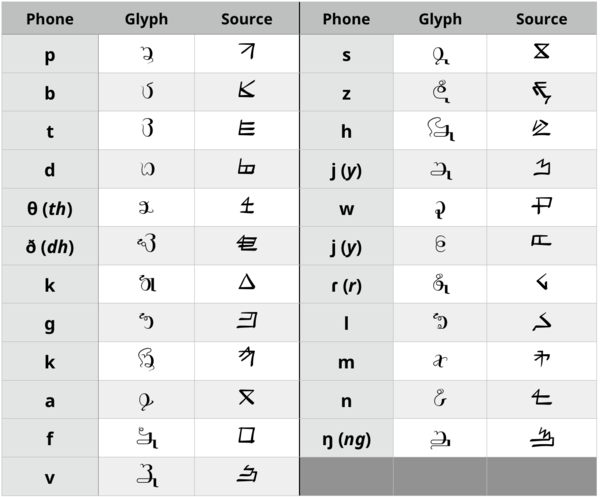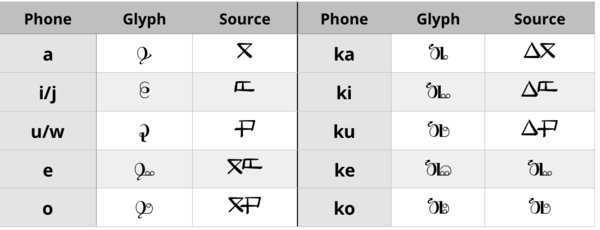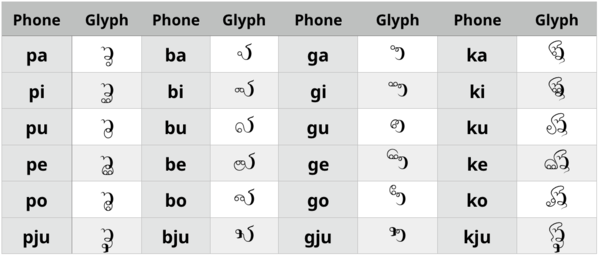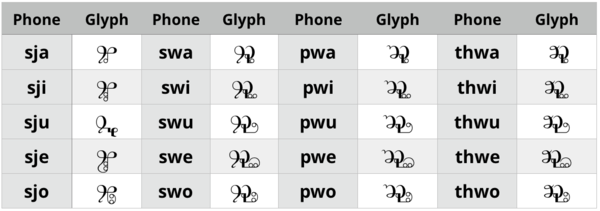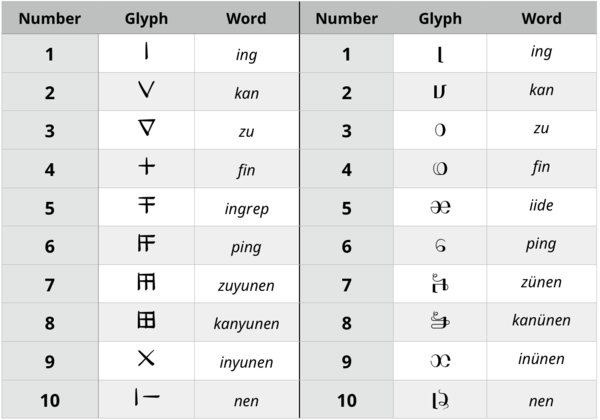Appendix:Afata orthography
Thala is an abugida by David J. Peterson used to write the Afata language from Tencent Games' Arena of Valor.
Orthography
The Afata orthography, known as the Thala or "vine" script, is a writing system derived from the Veda script. Thala evolved into an abugida, a writing system where consonantal characters incorporate modifications for vowels. The core characters and their correspondences can be found in the table below:
These basic consonant characters are designed to accommodate vowels, with certain glyphs featuring distinct visual elements as "landing places" for them. Notably, the characters for "k," "f," "v," "s," "z," "h," "j," and "r" have straight lines on the right side, indicating where vowels attach. The "h" character contains a whip-like element above it, serving as the vowel marker.
Vowel markers play a central role in the script. The marker for "a" derives from the Veda glottal stop character, while "i" and "u" evolve from the Veda "y" and "w," respectively. The vowel markers also possess semi-vowel forms.
To create word-initial forms for "e" and "o," vowel markers for "i" and "u" were added to the base "a" glyph, with subsequent modifications for "e" and "o" vowel markers. Vowels initially attached on the right side, following Veda's linear placement, but over time, convenience led to vowels attaching at the end point of the last line, resulting in variations in their placement, whether below, in front, or inside the main glyph, depending on visual elements or character writing style.
Additionally, certain consonantal glyphs combine with glides to create more characters based on their shapes:
Numerals
The number system is summarized in the following table, with the Veda sources in the left half and the Afata glyphs in the right half:
